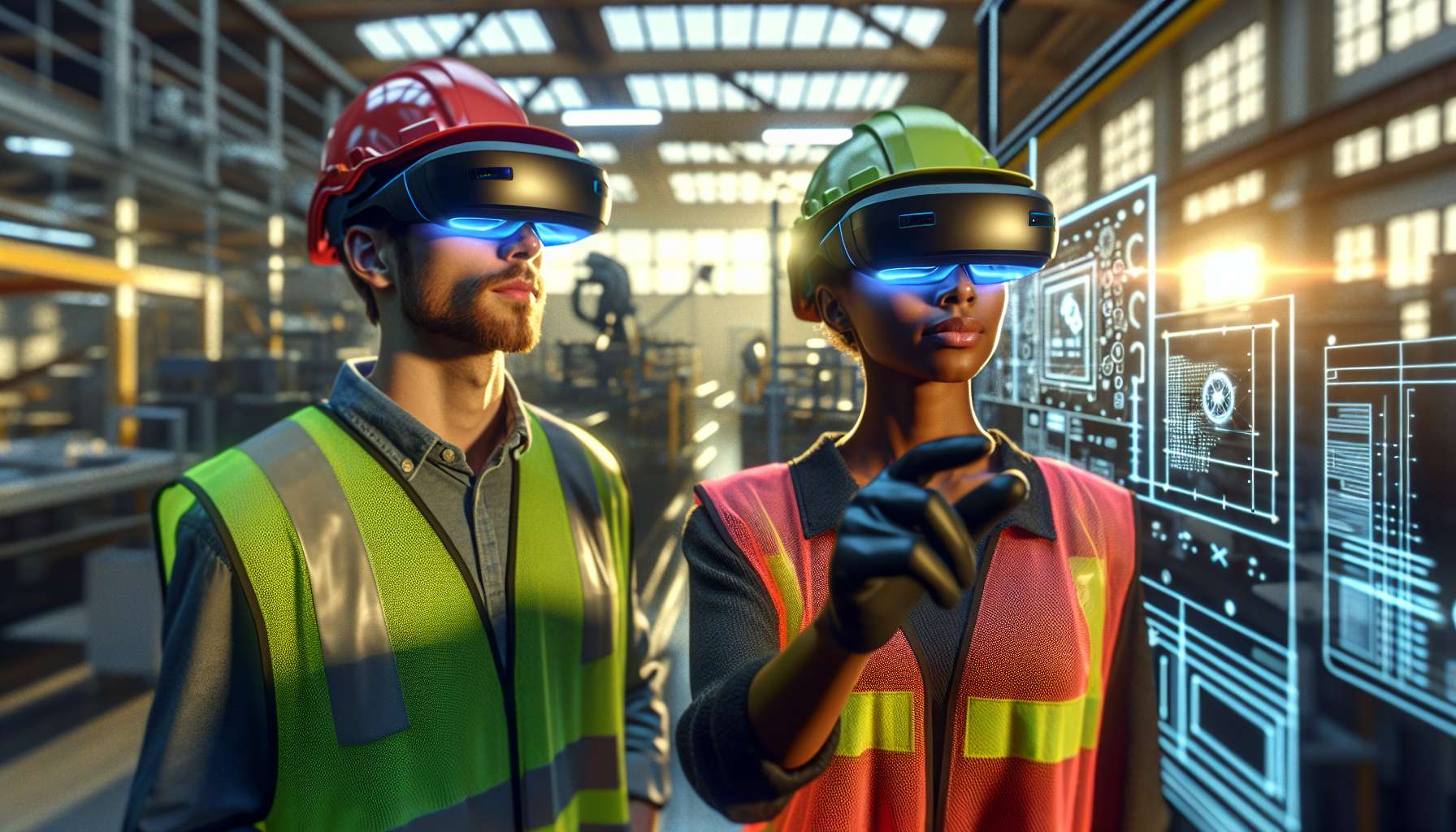Improving Manufacturing Efficiency and Quality with Augmented Reality
Manufacturing errors can be costly and time-consuming, leading to delays, rework, and dissatisfied customers. However, with the advent of augmented reality (AR) technology, businesses now have a powerful tool to minimize errors and improve overall manufacturing efficiency and quality.
What is Augmented Reality?
Before we delve into the benefits of AR in manufacturing, let’s briefly explain what augmented reality is. AR is a technology that overlays digital information, such as images, videos, or 3D models, onto the real world. It enhances our perception of reality by adding virtual elements that can be interacted with in real-time.
How AR Reduces Manufacturing Errors
AR technology offers several ways to minimize errors in the manufacturing process:
- Real-time Guidance: AR can provide step-by-step instructions and visual cues to guide workers through complex assembly or production tasks. This reduces the chances of errors and ensures that each step is performed correctly.
- Quality Assurance: AR can be used to overlay virtual inspection points on physical objects, allowing workers to easily identify defects or inconsistencies. This real-time feedback enables immediate corrective actions, preventing faulty products from progressing further in the manufacturing process.
- Training and Onboarding: AR can be utilized for training new employees, providing them with interactive and immersive experiences. By simulating real-world scenarios, AR helps new hires understand processes and procedures more effectively, reducing the learning curve and potential errors.
- Remote Assistance: AR enables experts to provide remote assistance to on-site workers. Through live video feeds and AR overlays, experts can guide workers in real-time, troubleshooting issues and minimizing errors without the need for physical presence.
Real-World Examples
Several companies have already embraced AR technology to reduce manufacturing errors and improve efficiency:
- Boeing: The aerospace giant uses AR glasses to guide technicians during complex wiring tasks. The glasses display instructions and highlight the correct wires, reducing errors and improving productivity.
- Volkswagen: Volkswagen utilizes AR to assist workers in quality control. AR overlays highlight potential defects, ensuring that each vehicle meets the company’s high standards before leaving the assembly line.
- General Electric: GE employs AR to train workers in complex assembly processes. By providing interactive instructions and virtual simulations, GE reduces errors and shortens the training time for new employees.
The Future of AR in Manufacturing
The potential of AR in manufacturing is vast, and the technology is continuously evolving. As AR devices become more affordable and accessible, we can expect to see even greater adoption in the industry. Here are some exciting possibilities for the future:
- Remote Collaboration: AR will enable global collaboration, allowing experts from different locations to work together seamlessly. This will lead to faster problem-solving, reduced downtime, and improved overall efficiency.
- Data Visualization: AR can transform complex data into visual representations, making it easier for workers to understand and analyze information. This will enable faster decision-making and more proactive error prevention.
- Machine Learning Integration: By combining AR with artificial intelligence and machine learning algorithms, manufacturing processes can become even smarter. Machines will be able to detect errors in real-time and automatically make adjustments, further reducing human error.
Conclusion
Augmented reality technology has the potential to revolutionize the manufacturing industry by minimizing errors, improving efficiency, and enhancing overall product quality. By leveraging AR’s real-time guidance, quality assurance capabilities, and training benefits, businesses can significantly reduce manufacturing errors and achieve higher levels of productivity. As the technology continues to advance, we can expect even more exciting applications and benefits in the future. It’s time for manufacturers to embrace AR and unlock its full potential for their operations.





